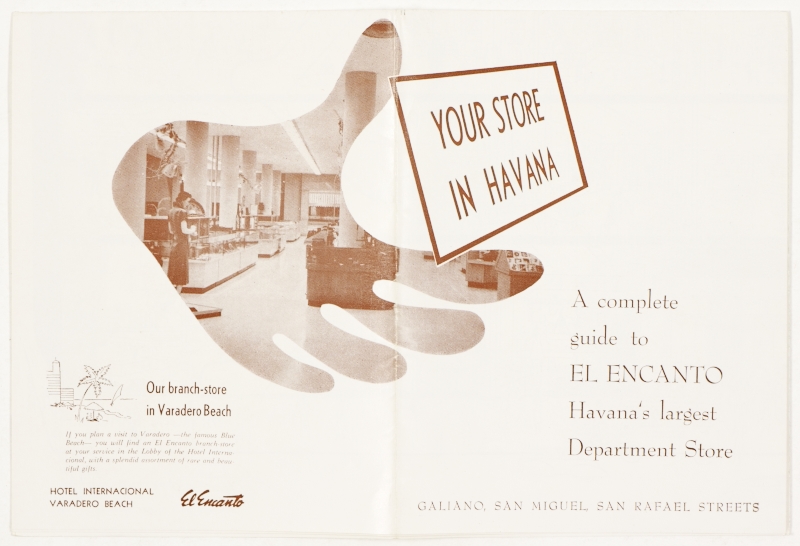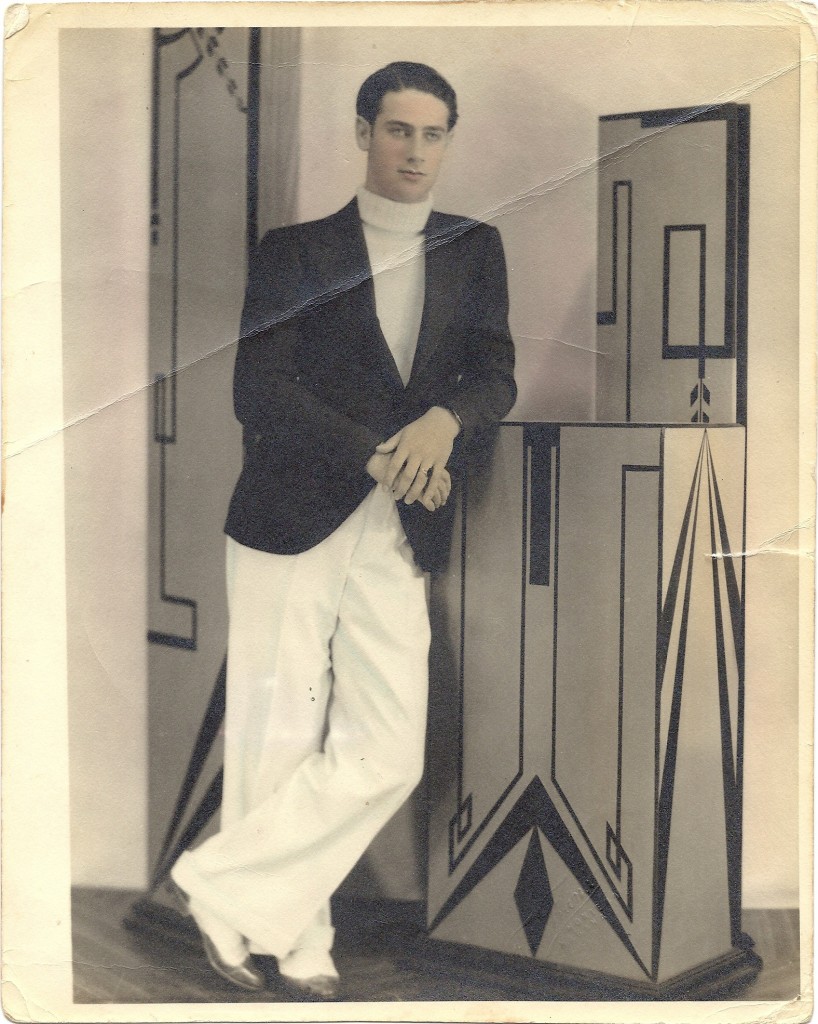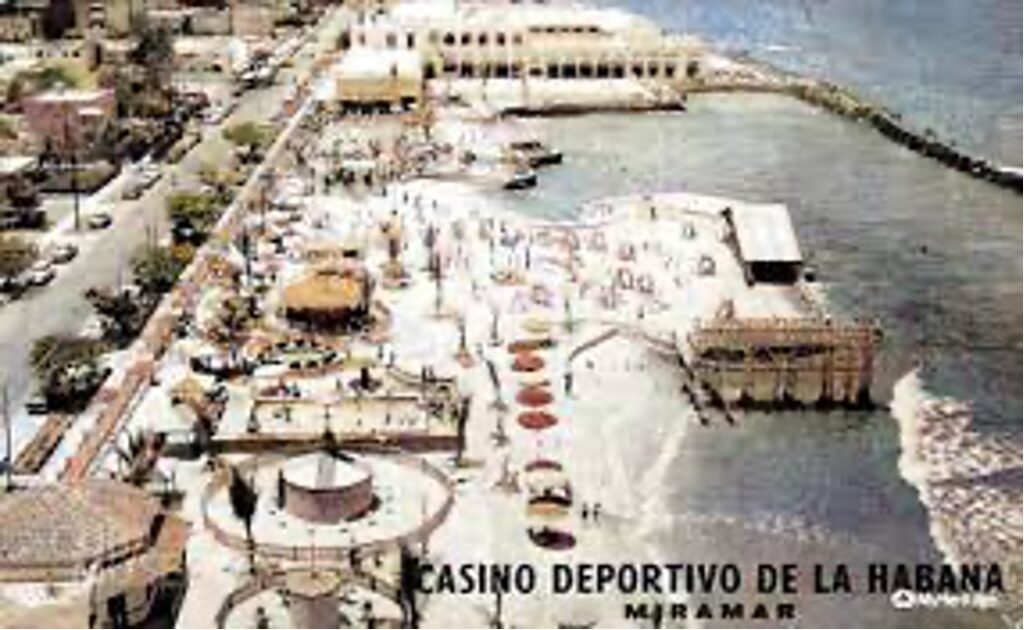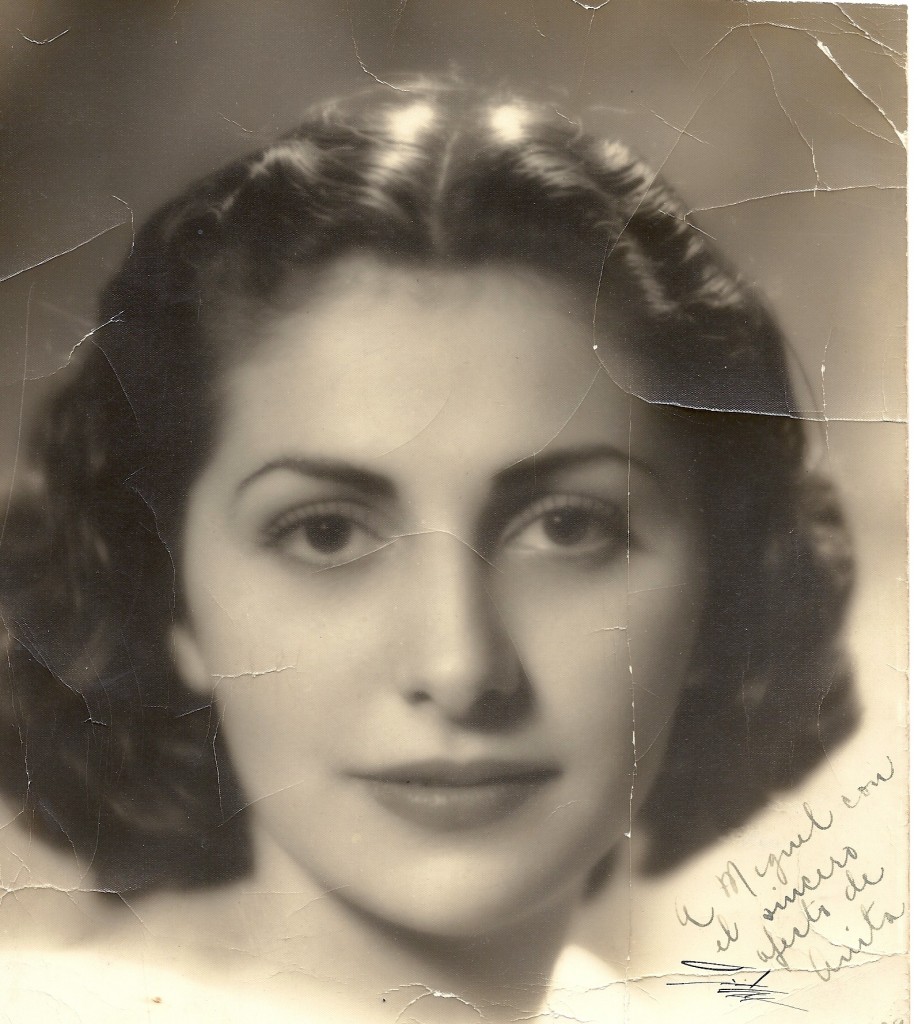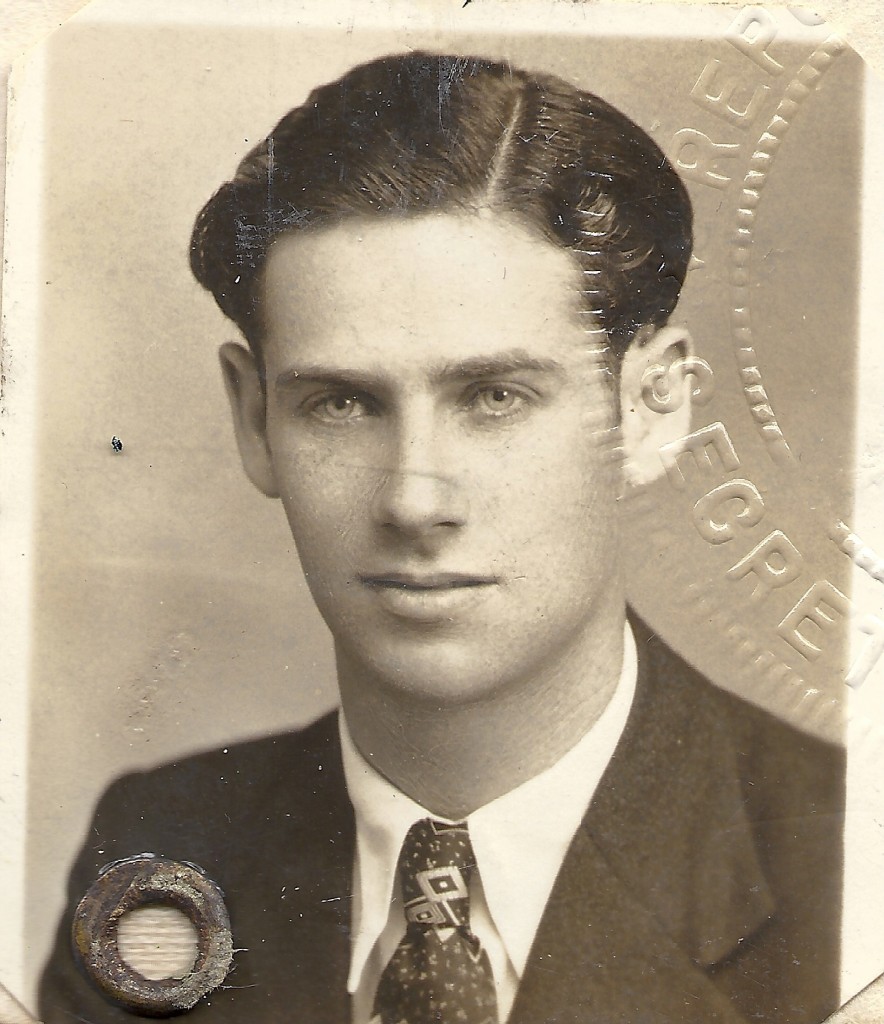 The photograph on the old passport is very small, and so easy to overlook. Using a scanner, I enlarged it, bringing its beauty and power into sharp focus. From that moment, the photograph centered me in this writing project, and I knew it must grace the cover of the book.
The photograph on the old passport is very small, and so easy to overlook. Using a scanner, I enlarged it, bringing its beauty and power into sharp focus. From that moment, the photograph centered me in this writing project, and I knew it must grace the cover of the book.
Chapter 05
Chapter 5 – 6: “Tiendas Waterston”
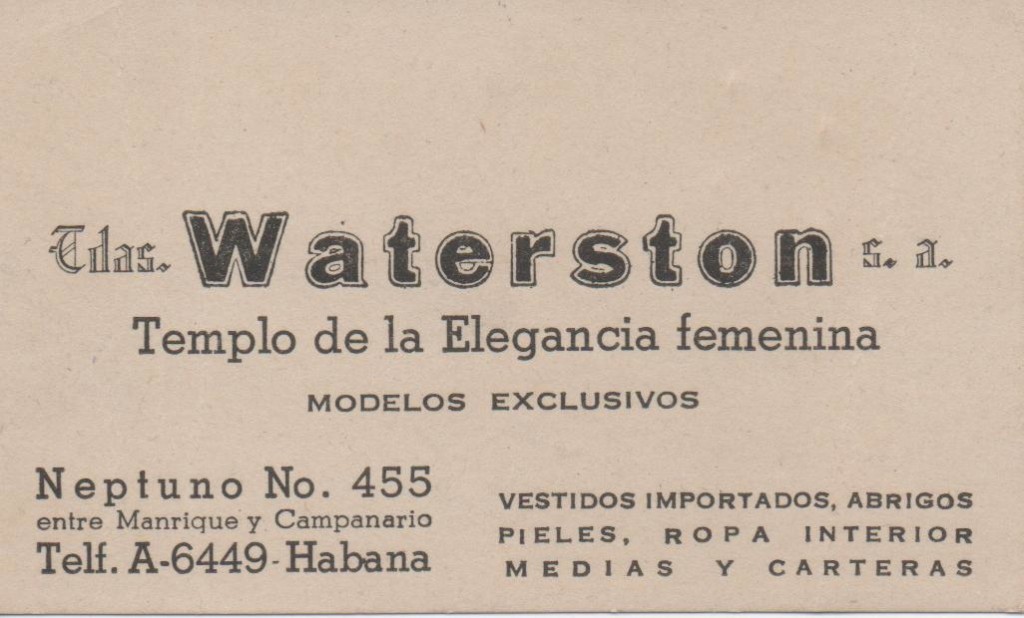 I found the business card for the store on Calle Neptuno among my father’s papers. The tagline, “Templo de la Elegancia femenina” (Temple of Feminine Elegance) signals this would be a sacred, special place where a woman could become the classiest, most sophisticated, most graceful of all—she could be transformed by American-style fashion. In his book, On Becoming Cuban Louis A. Pérez, Jr. dates the Americanization of retail businesses in Havana to the early 1900s.
I found the business card for the store on Calle Neptuno among my father’s papers. The tagline, “Templo de la Elegancia femenina” (Temple of Feminine Elegance) signals this would be a sacred, special place where a woman could become the classiest, most sophisticated, most graceful of all—she could be transformed by American-style fashion. In his book, On Becoming Cuban Louis A. Pérez, Jr. dates the Americanization of retail businesses in Havana to the early 1900s.
Chapter 5 – 9: “Alfredo Hornedo”
In this video clip, my father offers tidbits on Alfredo Hornedo who built the residence hotel Rosita de Hornedo and the country club Casino Deportivo. Someone could start with those tidbits to develop a rich study on the intersections of race, class, prison labor, architecture and tourism in 1950s Cuba.
